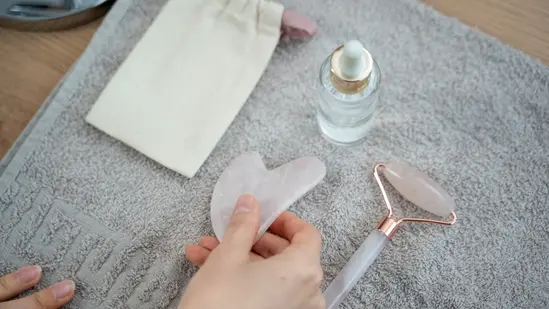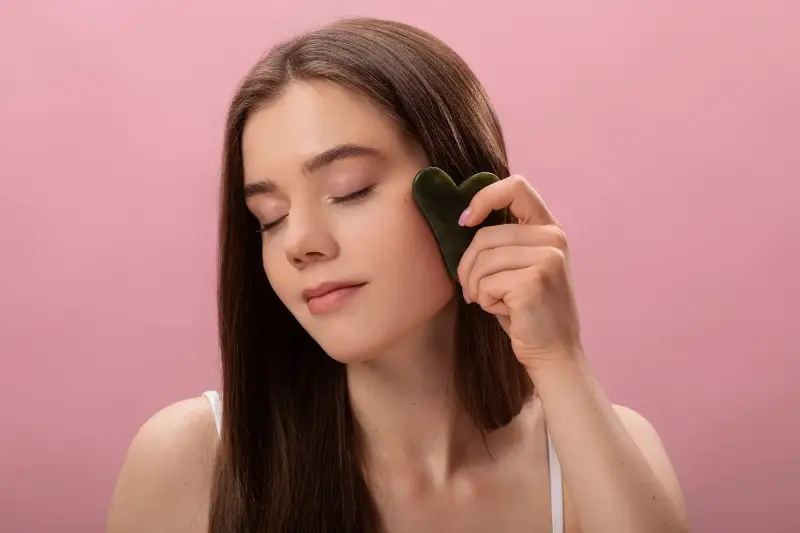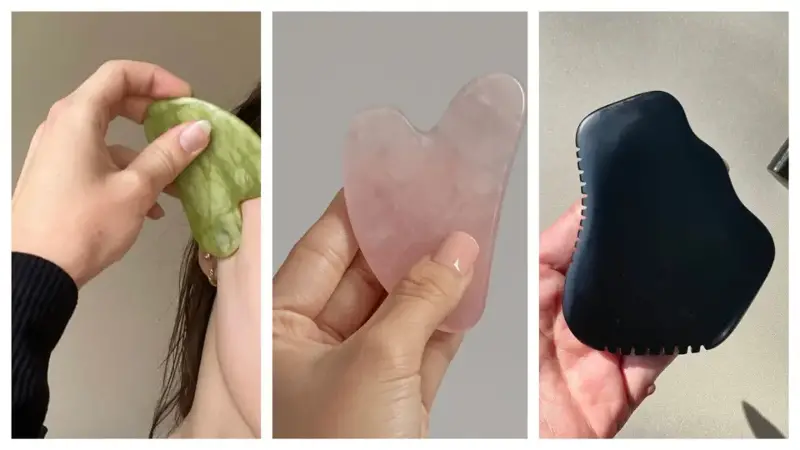
Gua sha is one of the most commonly featured stars in the skincare rituals you see on your feed. Even a quick scroll through Pinterest will show you that these pretty pastel tools have become an integral part of the everyday self-care aesthetic. But these tools aren’t a product of the digital age; the roots can be traced back many centuries. While trends come and go, don't mistake gua sha for another skincare fad because it may have got real substance.
Dr Sonali Kohli, Senior Consultant Dermatologist at Sir H. N. Reliance Foundation Hospital, Mumbai, spoke to HT Lifestyle about gua sha's history and benefits.
She said, “Gua sha, or ‘to scrape away illness’ in Chinese, is an old healing modality that has been in use for almost 3,000 years. It is an old practice in which the skin is lightly scraped with a smooth-edged instrument to stimulate blood flow, disperse inflammation, and release the body's own healing potential. From an integrative dermatology standpoint, gua sha acts on several physiological mechanisms. The mechanical stimulus, in a controlled manner, encourages lymphatic drainage, relaxes muscle tension, and induces the release of anti-inflammatory mediators."
"The soft scraping action stimulates mechanoreceptors in the skin, initiating a cascade of healing mechanisms that travel well beyond the treated area. This is why patients tend to experience both local and systemic gains from gua sha treatment. But pregnant women should consult a qualified practitioner before using gua sha," says Dr Sonali.
For those who haven’t added this tool to their skincare routine yet, or are using it regularly but might be making common mistakes, getting the basics right is key to reaping the full benefits.
Dr Sonali Kohli shared a comprehensive guide, outlining the key steps of correct gua sha usage, recommended materials, and what to avoid:
How to use gua sha correctly?

- Preparation: Apply a high-quality oil or balm to create a smooth gliding surface.
- Tool selection: Use a properly weighted gua sha tool with rounded edges (jade, rose quartz, or bian stone.)
- Technique: Perform long, steady strokes in one direction with gentle to moderate pressure.
- Duration: 5-15 minutes per treatment area.
- Direction: Follow the body’s energy meridians, typically upward. Always maintain unidirectional strokes.
- Areas: Focus on the jawline, cheekbones, forehead, and under-eye areas
- Angle: Hold the tool at 15-45 degrees to the skin.
- Combine with certain skincare: Use gua sha in combination with evidence-based skincare products such as vitamin C serums, hyaluronic acid, or retinoids for maximum effect. The enhanced circulation from gua sha can actually enhance the penetration and effectiveness of topical products.
Which gua sha material should you go with?

- Jade: Naturally cooling, great for inflamed or sensitive skin.
- Rose quartz: Gentle energy, ideal for beginners and everyday use.
- Bian Stone: Classic choice, thought to possess higher therapeutic. properties
Avoid these mistakes
- Never hold the tool perpendicular to the skin.
- Never perform gua sha on dry skin.
- Never apply excessive force; gua sha should never be painful.
- Avoid plastic or poorly finished tools that can damage skin.
- Always avoid broken skin, active acne, or inflamed areas.
- Avoid during eczema flares, psoriasis outbreaks, or active infections.
How gua sha may improve skin
- Reduce facial puffiness through enhanced lymphatic drainage.
- Improve skin elasticity and firmness.
- Increase microcirculation, promoting a healthy skin tone.
- Reduce muscle tension that contributes to expression lines.
ALSO READ: Skincare while travelling? Dermat shares smart hacks for plane, car and train rides
Note to readers: This article is for informational purposes only and not a substitute for professional medical advice. Always seek the advice of your doctor with any questions about a medical condition.
